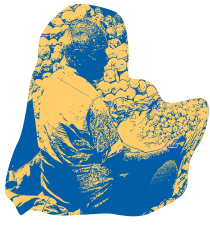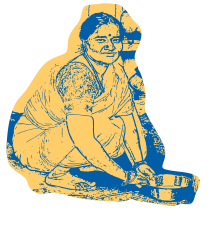Approach
The dashboard will feature results from six cycles of surveys that will be conducted from May 2020 till August 2021.
Currently, data is available for the following five survey rounds conducted between May 2020 to July 2021:
Cycle 1: May to June 2020
Cycle 2: July to August 2020
Cycle 3: September to October 2020
Cycle 4: December to January 2021
Cycle 5: June to July 2021
STORIES FROM THE FIELD

The crisis has forced me to rethink my current business, I am now planning to set up a mobile snack shop and hire my workers again.
S.Mothinath, Kancheepuram
Survey Method
Our stratified, convenience sample was drawn from various sub-industries in manufacturing, services and trade to provide a sectoral representation of microbusinesses. The sample was selected from lists provided by partner organizations. The following regions and states are being covered in the survey:-
North region: Delhi, Haryana, Punjab and Uttar Pradesh, West region: Gujarat and Maharashtra and South region: Tamil Nadu. The surveys are translated into regional languages and administered remotely, over phone.
STORIES FROM THE FIELD

I have found a new beginning after the lockdown hit my bakery business. I have tried mushroom cultivation and have now started selling sprout grains.
Chandrasekar, Trichy
STORIES FROM THE FIELD

I applied for a loan from the bank (jewel loan pledging my wife's jewellery) for an amount of Rs 50,000 for my business. However, I did not get the loan on time from the bank. I am now planning to ask my friend for help again, because the second lockdown has affected the business badly.
Murugan, Tirunelvelli
STORIES FROM THE FIELD

Before the second lockdown, I took a loan from my SHG to improve my doll business. 50% was spent to repay my previous debt which I had incurred after the first lockdown (March 2020), the remaining 50% was used to buy raw materials for my business. Sales were picking up after this, until the second lockdown was announced. Vendors are not willing to procure the dolls and we have not received payments for earlier orders. I expect sales to pick up only during this festive season, as the rainy season is starting when sales dip again.
Renuka, Kanchipuram